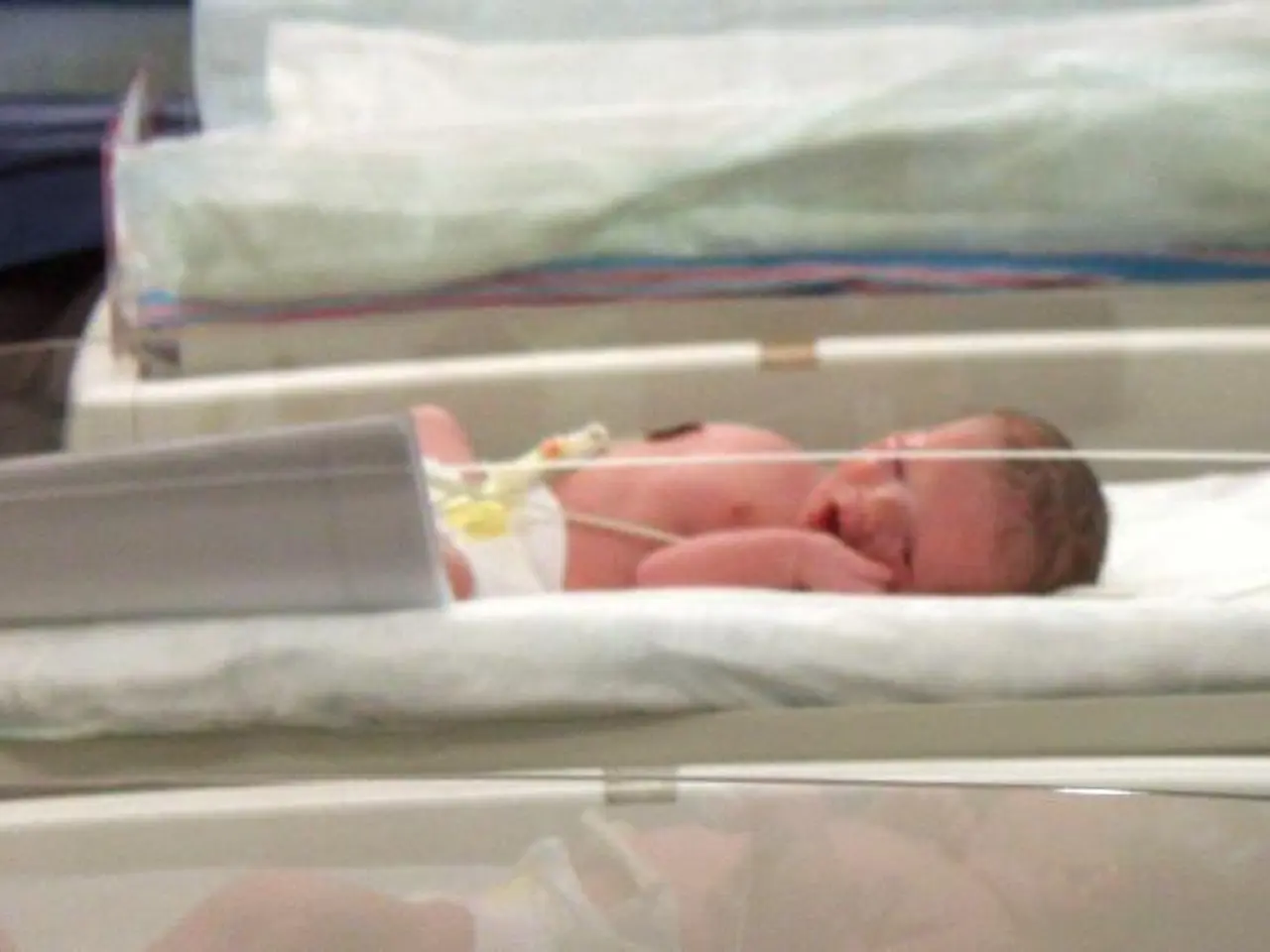Artificial birth innovations on the horizon: Evaluating the potential for child-producing robots in our society?
In the realm of technological advancement, a Chinese scientist claimed to have developed a 'pregnancy robot' capable of gestating a human child. However, mainstream media outlets report that a prototype could be ready as early as next year, raising serious ethical concerns among experts.
Tod Worner, a practicing internal medicine physician, has expressed skepticism about the objectivity of scientists and technologists, preferring the church as a moral guide in these matters. He compared the development of advanced reproductive technologies to the 'Jurassic Park question,' emphasizing the importance of establishing the direction of progress.
Worner is not alone in his concerns. Christopher Raub, associate professor and chair of the Department of Biomedical Engineering at The Catholic University of America, has expressed skepticism about the current technological capacity to produce a pregnancy robot. Raub notes that a temperature-controlled aseptic environment with extracorporeal oxygenation and artificial amniotic fluid is not designed to recreate the intrauterine environment of the first trimester.
Father Tadeusz Pacholczyk, a neuroscientist and senior ethicist, finds the idea of a pregnancy robot demeaning to women and a reminder of pursuing substitutes for women in their unique nurturing dimensions. He believes that the body-to-body self-giving of spouses is the unique and privileged setting that safeguards the origins of the next generation and helps assure that their human dignity is respected.
The Catechism of the Catholic Church notes that respect for the link between the meanings of the conjugal act is necessary for procreation in conformity with the dignity of the person. If humans take matters into their own hands and manufacture human beings in glassware and impose a 9-month machine-based gestation upon them, ethical lines are crossed, and both the designs of human sexuality and the respect due to all new human life in its origins are violated.
The technology for an extremely premature infant incubator, known as EXTEND, is under development. The device was tested on preterm lambs but not preterm human infants. Its effectiveness and ethical implications are yet to be determined. The use of an artificial womb or other mechanical device purely as an advanced incubator for the gestation of naturally conceived but prematurely delivered babies is generally ethical.
However, serious moral concerns arise when researchers seek to enable the start of a pregnancy within an artificial womb through means like male-robot sexual relations or IVF followed by embryo transfer into the robot. These practices, according to Worner, violate the sanctity of human life and the dignity of procreation.
The debate surrounding the 'pregnancy robot' is reminiscent of Aldous Huxley's 'Brave New World,' where the Central London Hatchery and Conditioning Centre artificially reproduces and conditions humans to fit predetermined societal roles. Worner cautions that science, while a wonderful gift, can lead to unintended consequences and that a moral question should always be paired with a scientific one.
As the technology continues to evolve, it is essential to consider the ethical implications and respect the sacredness of human life and procreation. The church, with its long history of thinking about ethics, could provide valuable insight into the consequences of modern science and technology.
Read also:
- Overweight women undergoing IVF have a 47% higher chance of conceiving naturally post-weight loss
- Bonsai Trees from Evergreen Species: Exploring Growth Characteristics & Distinct Qualities
- What temperatures may make walking your canine companion uncomfortable?
- Title: Information About Beovu: Potency, Form, Usage, and Additional Details





